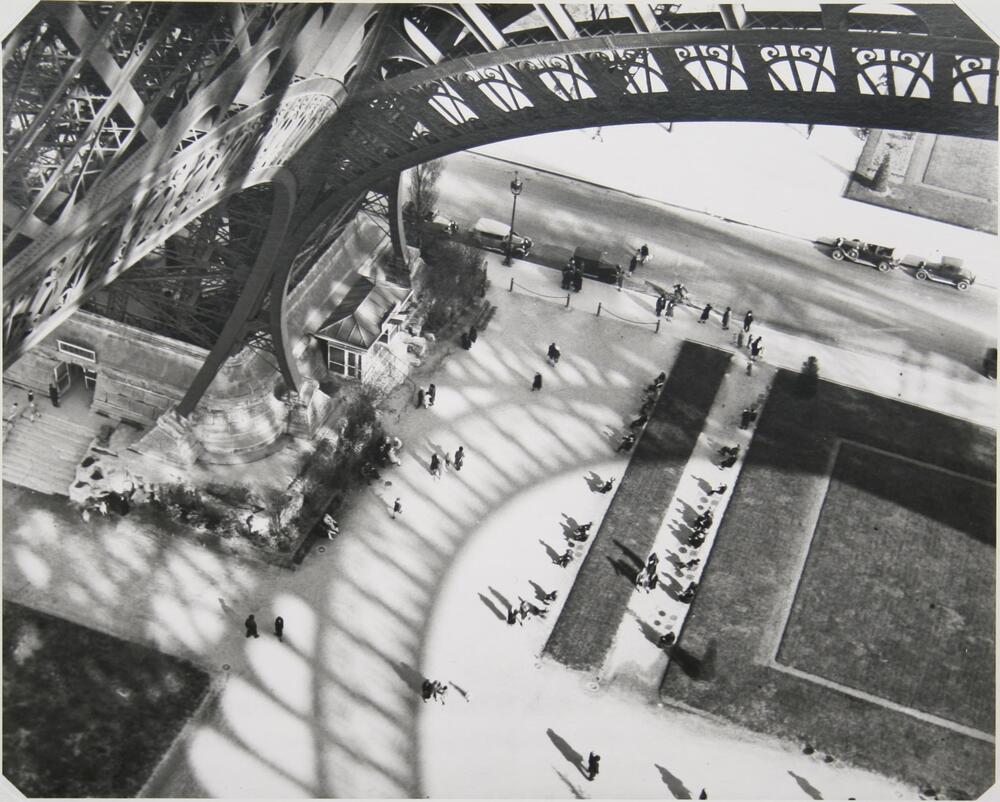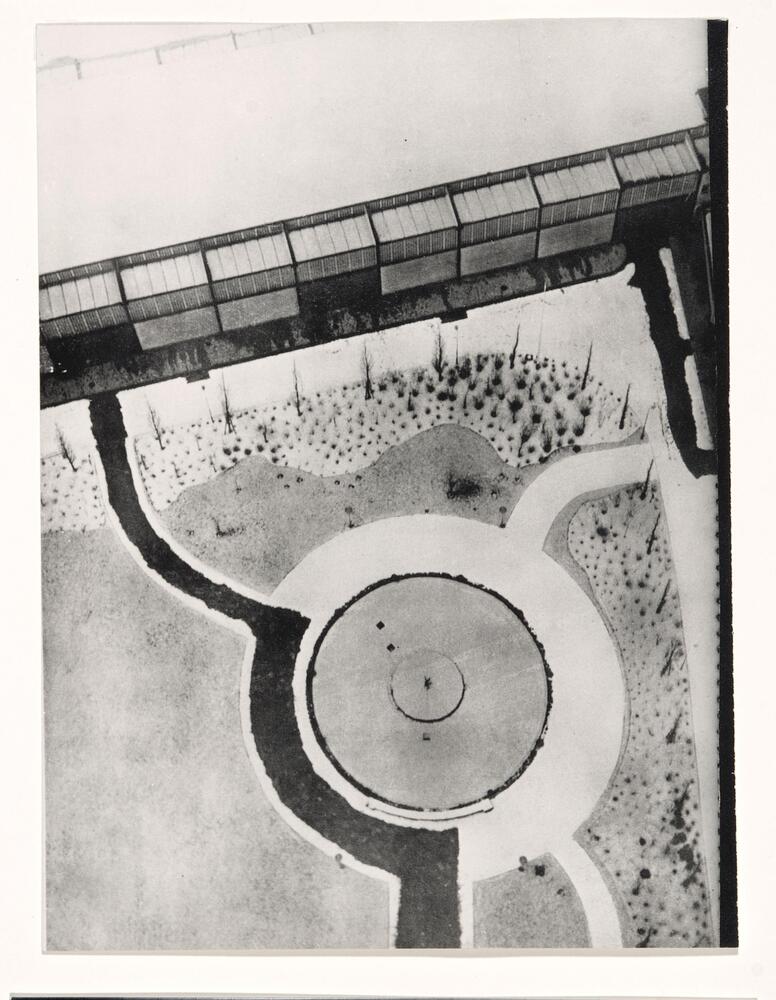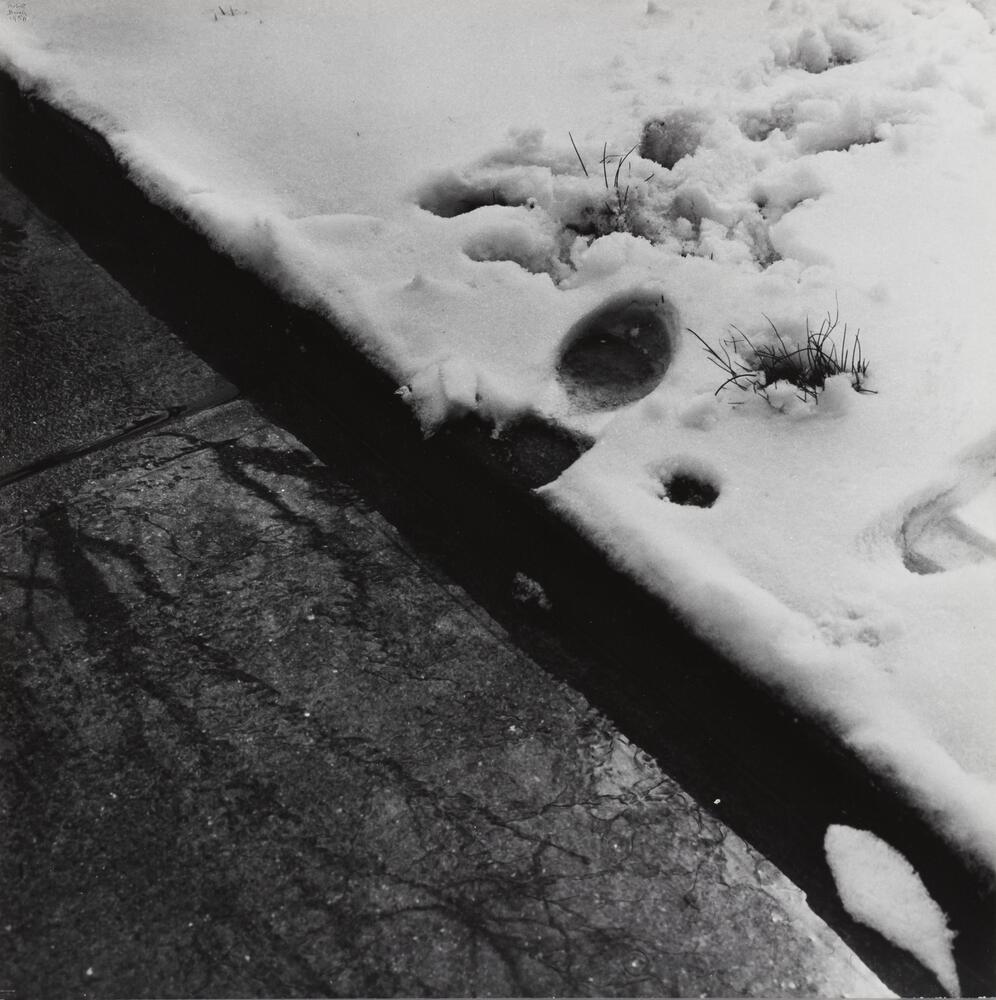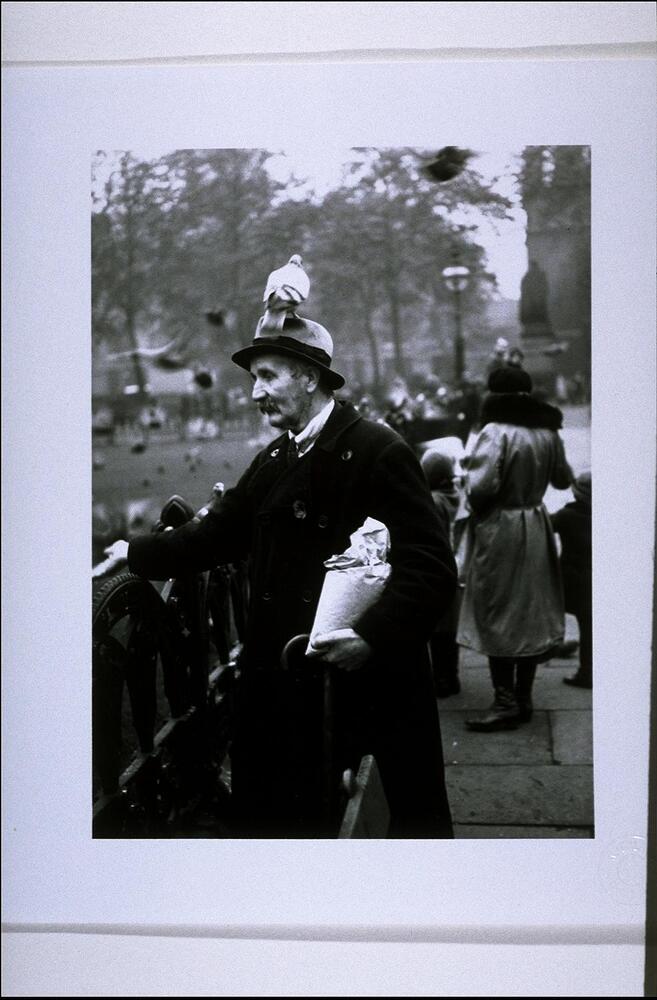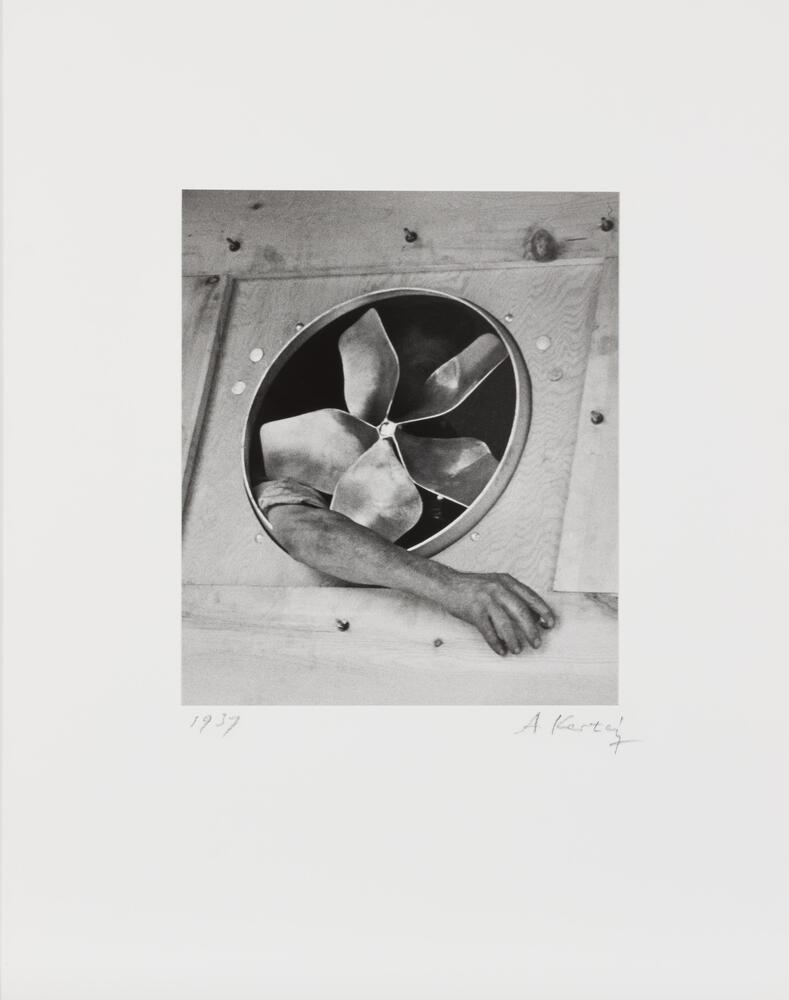Structures and Streets: Scales of the Modern Metropolis
by Tanya Silverman
It was in 1936 when Frankfurt-born Jewish photographer Ilse Bing first found herself in New York, the city where she would eventually settle after fleeing from Paris in the early 1940s. Throughout the 1930s, Bing had thrived in Paris, moving there in 1930 and establishing the reputation as the “Queen of the Leica” amid the modern urban environment. Perhaps it does not seem too curious that during her prolific three-month visit to New York, Bing brought her Leica to Central Park and proceeded to take pictures there. What seems more curious, though, was the motivation behind the deliberate daylight obfuscation of tall buildings by deciduous branches in their barren state. The stated outlook of Bing may shed some light on her approach to this specimen of her architectural photography: “I did not find the New York skyline big like rocks. It is more natural than that, like crystals in the mountains, little things grown up.” Using the geologic logic, Bing’s Central Park photograph acts as a close-up study of the urban mountain ridge, accounting for how the two “crystal” towers surpass the timberline as they jut up from the rock formations found below. The absence of people elicits notions of a mountain-trail trek to an isolated natural site—in parallel to the walking-path experience of the iconic city park.
Andre Kertesz was born to a Jewish family in Budapest, where a lack of career opportunities prompted his move to Paris in 1925. Four years later, he photographed the iconic modernist architectural photograph From the Eiffel Tower (1929) to accompany a magazine article about the structure’s fortieth anniversary. The picture speaks to Kertesz’s skill for capturing shadows, with details of the tower casting upon the ground and occasionally blending with those of the people present. Paris was a prime place for Kertesz’s creative blossoming, running in Hungarian expat and artistic circles while developing his personal approaches for unified pictures that played with shapes and spontaneity yet never drifted too far into abstraction. By including inner views of the tower’s leg from the first platform, Kertesz’s photograph does not endeavor to radically subvert our understanding of this modern architecture, but rather stimulate and enhance our perspectives of it through the novel visual perspective that the picture presents. Kertesz had already established himself as a name in the City of Light by the time of his contemporary Ilse Bing’s arrival in 1930. In 1936, he also traveled to New York for work, but ended up living there permanently.
An innovator of modernist ideas in photography, architecture, and various other fields, Laszlo Moholy-Nagy was born to a Jewish family in Bacsborsod, Hungary. He left Hungary for Germany in 1920, engaging his design theories and practices at the Bauhaus and then his own design academy. Paris also played an important role in Moholy-Nagy’s trajectory with photography. It was in that very city, while vacationing there with his wife in 1925, that he first used a camera, engaging in some unique architectural shots, including upward-facing views of the Eiffel Tower from the ground level. Subsequently, in the winter and spring of 1927-8 in Berlin, Moholy-Nagy created a series of about nine camera images by facing downwards from the top of the Berlin Radio Tower, including From the Radio Tower, Berlin (1928). Around this time, Moholy-Nagy was formulating his ideas about the “New Vision,” which designated photography as instrumental for humans to see more of the modern world than what immediately met the eye. It thus becomes sensible to understand this photograph as a high product of his modernist visions, with its vantage point from what was then the tallest building in Germany (about 450 feet), offering new possibilities of visualizing Berlin’s urban layout through aerial peculiarity via architecture. The geometric forms emphasize aspects of human material creation and intervention over the land with the natural features and effects thereon. The curvature of the dark, partially cleared path and straight, diagonal line of structures dwarf the landscaped flora and reduce the snow to a monolithic, white mass.
In 1956, three years before giving up photography, Isle Bing captured shots of footprints (and pawprints) appearing in snow on pavement. Snow in Spring meanwhile sees the amblers’ evidence off of the pavement and upon the adjacent snow-covered grass, blades of which pop up and remind us of the seasonal cycle’s progression. Likely taken in New York City–where Bing had relocated to for good in 1941 after fleeing Paris–the photograph offers insights into the everydayness of a city’s pedestrian experience, testifying for the interactions with the elements that urban planning can mitigate but not eradicate. In this example of urban street photography, Bing recurs the theme of bare tree branches, reminiscent of what she did in Central Park twenty years prior. Seen as reflections upon a frozen puddle, the dark lines of the trees form intricate nets on the surface that testify for the unexpected aesthetics of minutiae that Bing effectively documents in her street photography.
A familiarity with the breadth of Laszlo Moholy-Nagy’s modern photographic philosophies and experimental strategies may actually make such a banal instance of street photography as Man with Pigeon (circa 1933) come across as unexpected. In its frame stand no notable montages, abstracted principles, shadow plays, or articulations of “typophoto… the visually most exact rendering of communication” (as proclaimed by Moholy-Nagy). Rather, the denotative aspects dominate the image wherein a man stands with a pigeon perched upon his hat. Though the settings are urban, the exact location is not identified: perhaps Germany, Netherlands, or England. The tumultuous historical circumstances of mid-1930s Europe caused Moholy-Nagy to migrate to several cities before leaving for the major American city of Chicago in 1937 and settling there for good. As such, we can note that in connection with Moholy-Nagy’s world of modernist philosophies and experimental strategies upon myriad media, Moholy-Nagy existed as a denizen of the material world, one who navigated its modern urban spaces. Experiencing the energies of everyday life in the Western city while observing universal facets of its public space (pigeons, pedestrians) complemented Moholy-Nagy’s highly productive and pioneering trajectory.
For as many setbacks that Andre Kertesz experienced in his moving from Paris to New York in 1936, the rocky transition did not curtail his knack for the spontaneous shot and proclivity for the city streets. One day in 1937, while passing a drugstore on Fifth Avenue and Eighth Street, Kertesz happened upon the uncanny sight of a man’s arm protruding from between the recess of a ventilator fan. The obfuscation of the subject gives his arm a fragmentary feel, even a surrealist sense of suspense. The decontextualization effected by Kertesz’s cropping technique emphasizes feelings of dumbfoundedness towards smaller, peculiar sites amid mass motions and monumental structures in the modern mega-metropolis. The intimate contact zone of flesh, metal, and wood provide some direct sense of sentience while underscoring the potency of unexpectedness.
1 Comment
— by Charles Henry Gertner (December 13 2022 @ 9:57 pm)
0 Tags & 0 Keywords
Tags
Created For
K-12 EducatorK-12 Student
Museum Visitor
UMMA Docent
UMMA Staff
University Faculty
University Student
Rate this Resource
AVG: 0 | Ratings: 0
& Author Notes
All Rights ReservedLast Updated
November 28, 2022 9:46 a.m.Report
Reporting Policy

